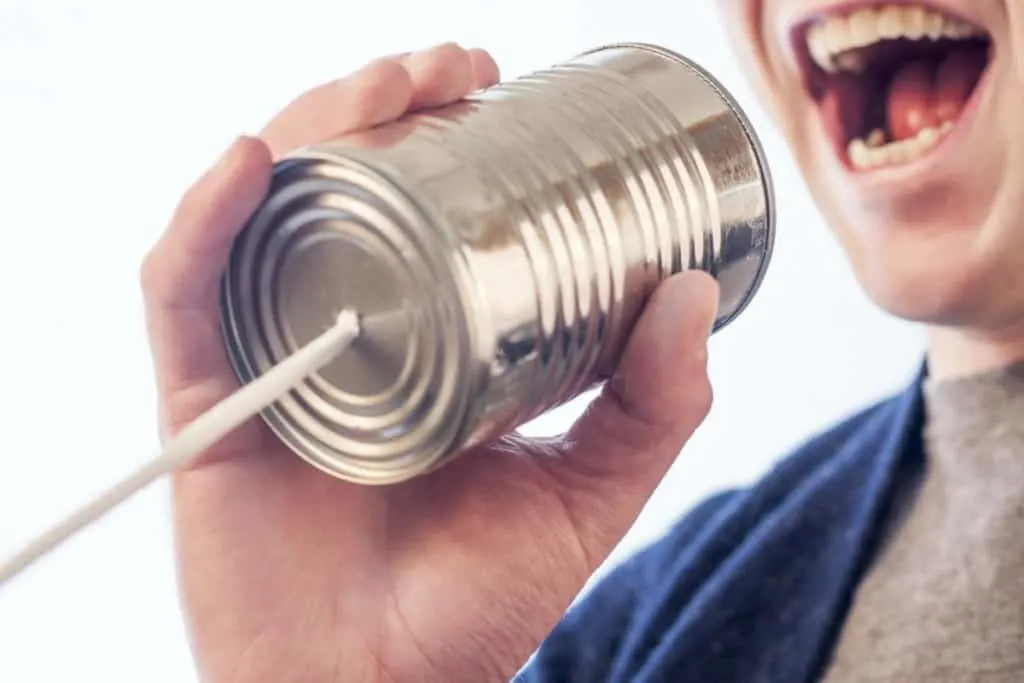Have you ever calibrated the room in which you make your recordings?
Do you mean that you bought expensive, state of the art equipment, and just organized it the way you thought was cool? But what about the ghost frequencies, the bottom end, and the sound pressure? Well, I have seen this happen a million times: a better speaker doesn’t necessarily mean you’ll have a better mix if you don’t do proper room correction.
In fact, a better speaker will only deceive you further if you are not taking the proper care of it. I decided to put this post together to encourage people to do this simple, yet crucial step to get better-sounding mixes.
So, what is a reference microphone?
A reference microphone is a flat-response, ultra-transparent, omnidirectional microphone used in audio analysis to measure the acoustic characteristics of any given room. Reference microphones can also be used in other sonic endeavors, but their true worth is given by their uncolored response.
The more expensive regular microphones are, the more personality they have, and the worse the result will be. So, for accurate, unbiased testing of a room, you need to use the right tool. The right tool is a reference microphone.
Wait, that’s it? No, there is a lot more to learn about reference microphones and why you need one to test your equipment today. Utilizing a rather inexpensive tool such as a reference microphone, you can overcome the problems of 70% young producers and music-makers in the world.

Why Calibrating Speakers The Room?
If you are reading this, chances are you know exactly what a sound wave is and how it behaves. I remember back when I was a sound student, we were taken to different studios to talk about the acoustic treatment of the rooms. We studied charts and saw some flow diagrams to understand just how deceiving sound waves can be when crashing against the wrong surface.
We would get all kinds of differences from a faulty low end to a harsh bunch of unintelligible high frequencies. Then, we would hear the same mix in a treated room and see the differences and, believe me, they are huge.
Sound isolation and acoustic treatment are two of humankind´s most wonderful inventions. Yes, forget about the wheel or artificial intelligence, once you hear sound in a treated room you are taken forever.
Let’s take a look at what kind of problems you can solve using a reference microphone to measure and treat your room.
The Ghost Frequencies
These are not frequencies running around with chains trying to spook you, but more like a hologram; just as a dead Jedi.
These are frequencies that appear in the spectrum, not because your DAW is reproducing them, but because the sound reflection is generating them. What does all that mumbo jumbo mean?
That the moment you take your ground-breaking mix with a mammoth low end to a different set of speakers in a different room, the ghost frequencies will be gone. That can leave you in shame in front of musicians, colleagues, and friends.
To avoid that awful moment, get a reference microphone and calibrate the speakers to the room. Getting rid of ghost frequencies allows you to polish that low end until it rumbles every speaker in every room.
Are Your Speakers Lying To You?
How long have you had your current monitors? How used to the way they sound are you?
Well, the true test is to move them to a different room. Play on them the same tune you were playing in the original room and hear the difference. Is it minimal? Is it huge? Whichever the answer is, that is what you are missing out because your speakers are “lying to you” reflecting sounds against the walls and distorting frequencies.
Calibrating the speakers to the room will force them to tell the truth at all times. You know what they say about the truth: it is preferable to listen to an ugly truth than to live in a beautiful lie. You might have to relearn a thing or two when you start mixing with the newly calibrated room.
It all comes down to the bottom end.
To be completely honest, as a mentor or a teacher, most of the mixes I get from my students feature the same fail: a loose bottom end. This is not a minor detail.
Most songs, especially the ones that are supposed to make you dance, need a fat bottom end.
The low frequencies are home to the groove, the bass line, and, most importantly, the kick drum. There are very few styles of music that don’t rely on the bottom end to make you feel something. Whether it is death-metal, speed dual kick drums, or a fat synthesized kick or even an up-tempo, radio-approved pop-rock tune; they all rely on that kick drum.
If your speakers lie to you and you make room for ghost frequencies to haunt your mixes the only place that bottom end will work is your studio. If that is your goal, then great, but if you want others to enjoy your music just as much as you do, then you need the bottom end to be tight, round, and present.
A reference microphone to calibrate your speakers is a must.

Do I Need A Reference Microphone To Test The Room?
This is a paramount question to ask when you made the decision to calibrate your monitors and room. I get this a lot, especially from well-versed audio engineers holding a plethora of other microphones. There is a very long answer with multiple charts that discusses this topic to the very inch that you can find here.
A smaller, but not for that less accurate answer would be YES. The benefits of an uncolored, completely flat frequency response from the reference microphone cannot be achieved with any other unit.
So, for accurate, unbiased testing of any room, you will need to use the right tool. The right tool, of course, is a reference microphone.
The Best Reference Microphone For Your Budget
Speaking of which, let’s take a look at some cool options. I know, you opened Amazon on a different tab and looked for a reference microphone and the list goes on and on. Don’t worry about that, I’m going to give you my top three picks for three different budgets (and some extras because… why not?).
· Behringer ECM8000 – It is difficult to find a brand that can beat Behringer in manufacturing great products at great prices. This entry-level microphone can solve your needs, and add to the mix a hard case along with all accessories in a great combo for, most of the time, less than $100. Take a look at this microphone here on Amazon.
· Beyerdynamic MM1 – The German giants offer this best-seller and, to me, it occupies the first position as a mid-priced reference microphone. It is a jump from the Behringer in the sense that it is more accurate and that also offers more consistency on a day to day basis as well as different weather conditions. Just like the Audix TM1 (a little more expensive), they are the common-people reference microphones that you will find in most studios in the world. They represent the industry standard.
· Earthworks M50 – So, this is what the regular budget in a regular studio would call top-of-the-crop or la crème de la crème. Whether you get the more affordable M30 or the amazing M50, results will be superb. They are great for measuring all frequencies between 20Hz and 30 kHz; which is even more than what our ear can capture. They come with a reference track created specifically for the microphone you are holding that is given to you after entering the serial number on a given website. The results will be the most accurate and consistent in the market before going to the boutique $10,000 or more reference microphones.

What Comes After Using A Reference Microphone?
You might be scratching the top of your head right now and asking yourself, well… but what now?
Making measurements in the room is step one.
Step two will be to run the specific software for the microphone and follow the exact instructions to get it done. You have to re-accommodate all studio furniture and equipment to match the software’s outcome. For example, you can check this cool video that walks you through a calibration from moment one to the end.
A great thing about the video is that it is all based on an inexpensive model from Sonarworks.
In this other video, you can see the differences in the frequencies, especially in the bottom end when using sound attenuators to treat the room we’re going to be working at.
Finally, this is a rather long video in which legend Bobby Owsinski (Zappa, The Byrds, Jimi Hendrix, The Ramones, Elvis, The Who, Pantera, Neil Young, and Willie Nelson to name just a few) discusses acoustics and their impact in music with producer Warren Huart.
Conclusion
If you are going to be working with speakers and trusting your ears, you need to remove all biases. You can be very used to the sound of a specific pair of monitors sitting in a specific place of a room, but that doesn’t mean the sound is unbiased.
Let your ears be your competitive advantage. You will take them everywhere with you and they come free with the body for a lifetime. The more you can clear the path for them, the better the results will be.
Happy (calibrated) mixing!
